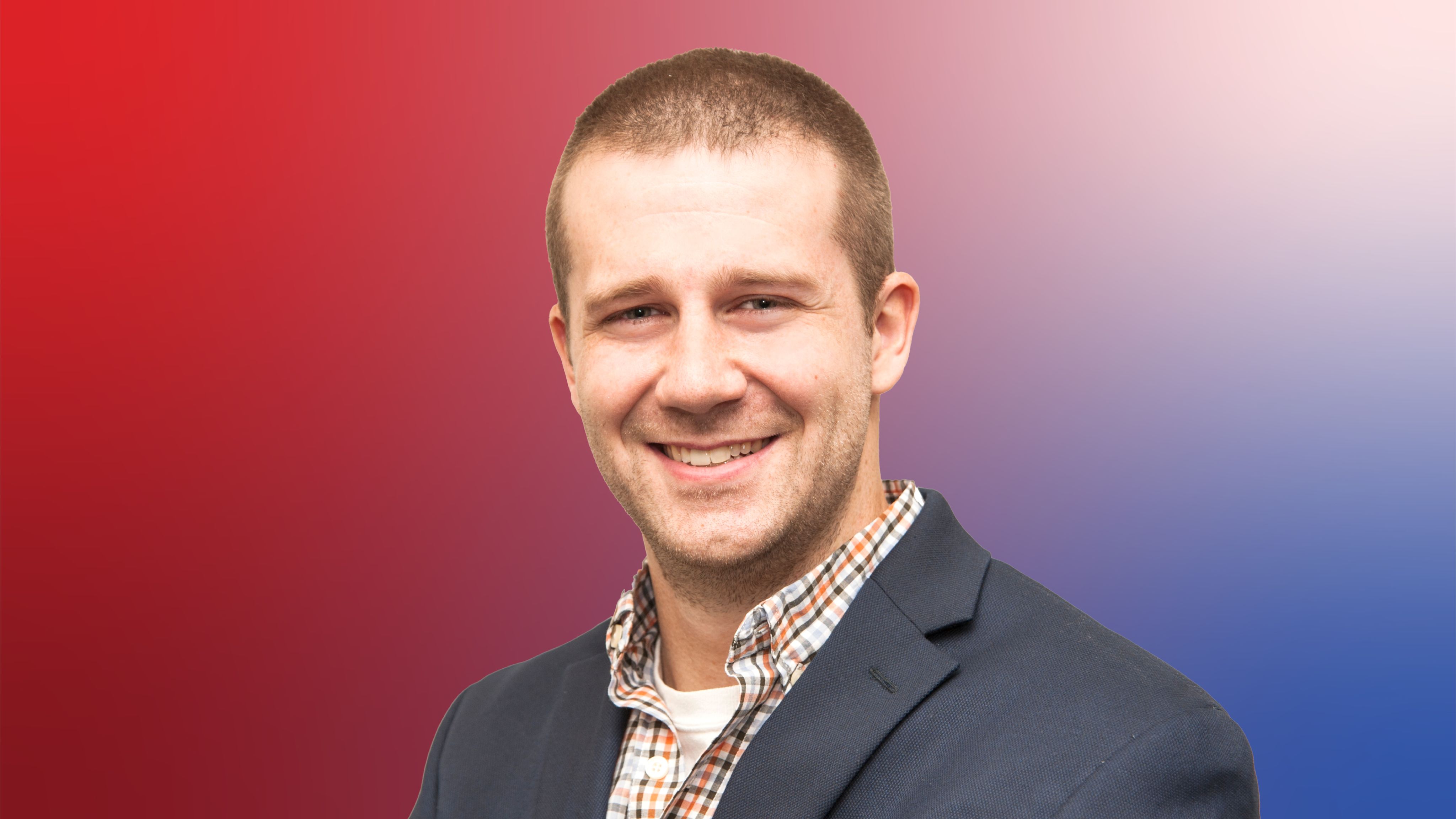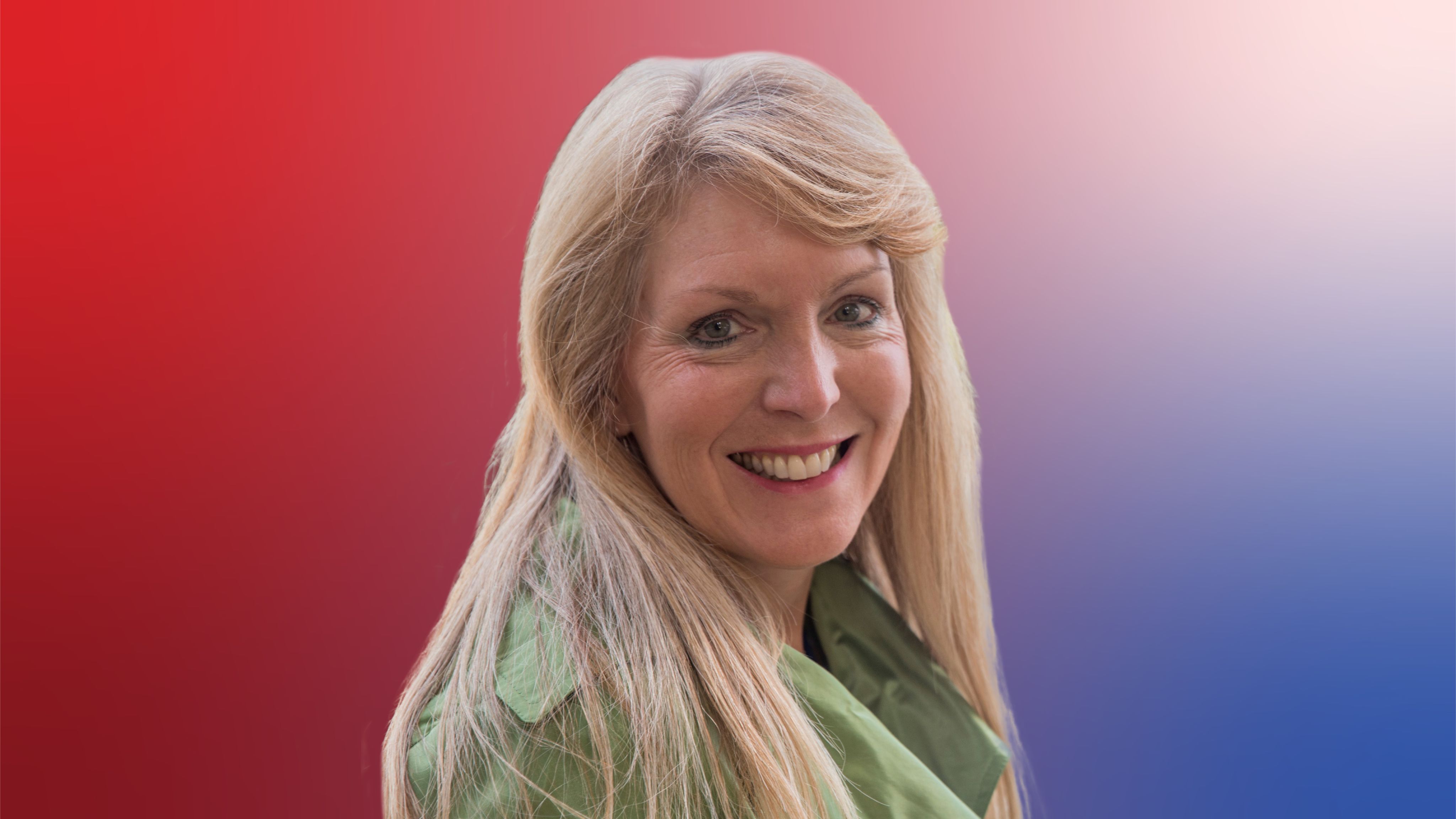Special Edition:
Mass Spectrometry
in 2025
Trends, Challenges, and Change

As we enter the latter half of the decade, mass spectrometry continues to push boundaries and explore new frontiers. As highlighted at ASMS 2025, advances in instrumentation, ion sources, and computational tools are allowing researchers to probe ever-larger molecules while fostering interdisciplinary collaborations that turn complex data into insights with real-world impact.
Here, in this inaugural digital Special Edition of The Analytical Scientist, we speak with three mass spec leaders: David Clemmer, Boone Prentice, and Susan Richardson about the current trends and challenges for the field – presented in a new and engaging format.
We also highlight some of the most compelling mass spectrometry research from 2025 so far – spanning novel methodologies, technical breakthroughs, and research that expands our view of complex chemical systems.
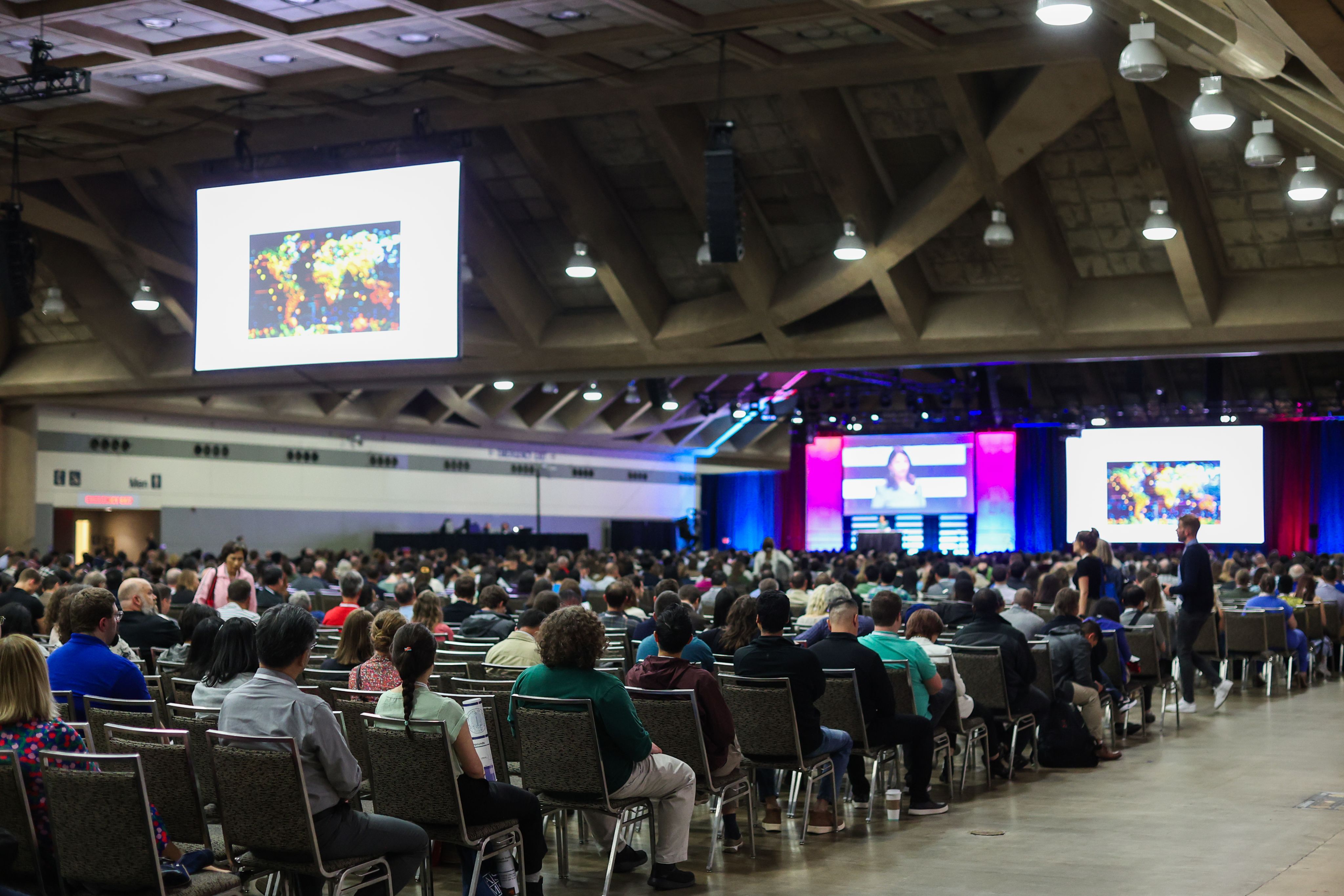
Contents
The Spirit of ASMS
For Boone Prentice, the conference was a microcosm of mass spec’s best qualities: technical brilliance, community, and optimism
Drowning in Features; Thirsty for Answers
The challenge of identifying unknowns looms large for mass spectrometry, says Susan Richardson, who returned from ASMS 2025 with new ideas – and a hope that AI might finally bridge the gap between data and discovery
Welcome to the Era of Megadaltons… and Beyond…
As new ion sources and megadalton capabilities emerge, the boundaries of mass spectrometry are being redefined, suggests David E. Clemmer from Indiana University
The Spirit of ASMS
For Boone Prentice, the conference was a microcosm of mass spec’s best qualities: technical brilliance, community, and optimism
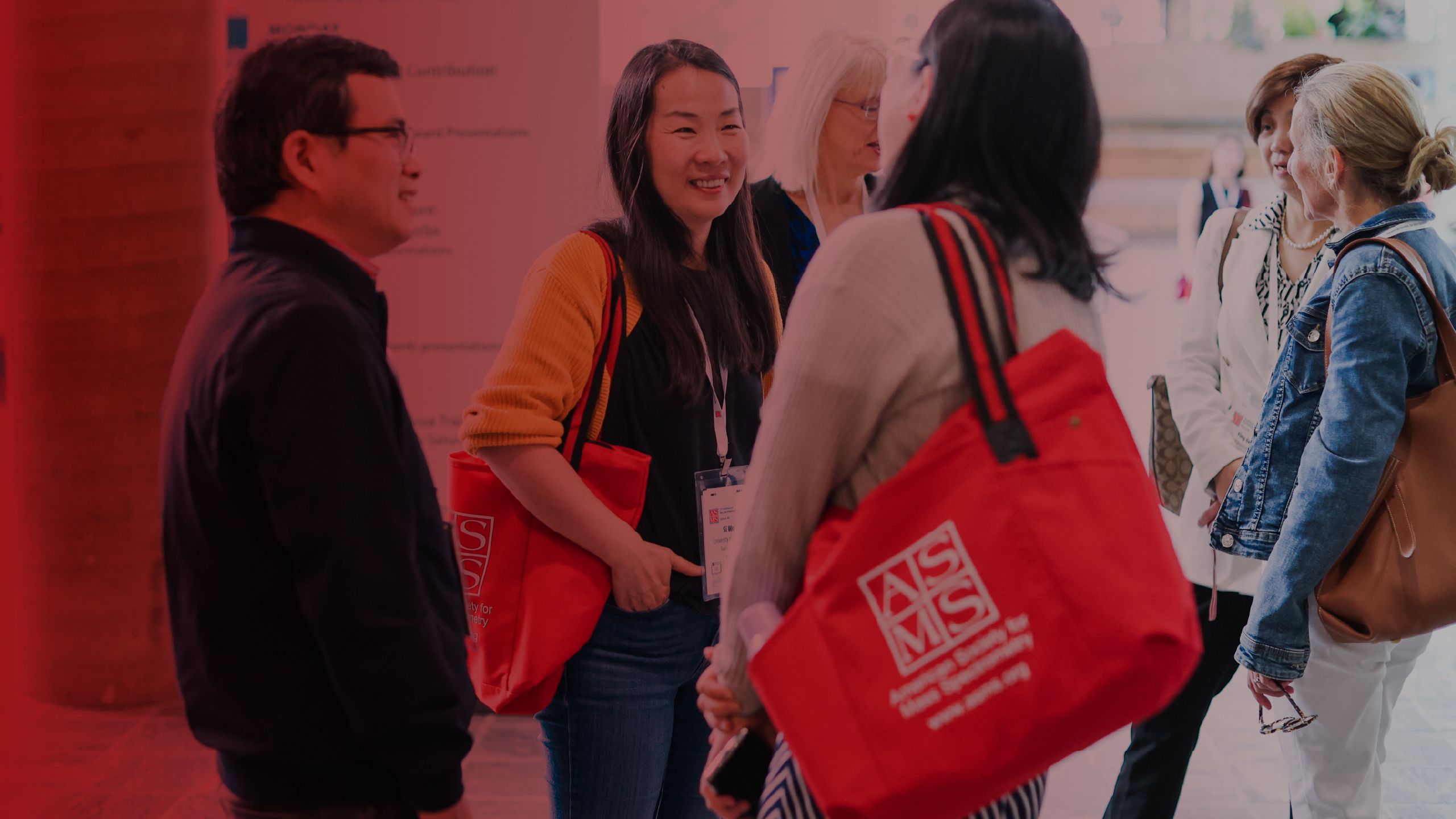
How would you describe the mass spectrometry landscape in 2025?
I would say the current landscape is very strong. Walking around ASMS in June this year, I came away – as I do each year – with tons of new ideas and inspiration for new experiments. It’s a testament to the quality of research happening in the community; there are thousands of posters, thousands of attendees, tons of talks – and the quality is just amazing.
The sheer quality of both the research and people – it’s impossible to not come away impressed by both.
Looking back at the past year – ASMS 2025 in particular – what stood out to you, thematically or technically?
On the technical side, I’ve been really impressed by the sophistication and integration of the experiments being performed over the past few years. One of the major themes is the concept of multimodal and multiomics-type approaches, which can provide increasingly detailed views of complex biological systems. This line of thinking really holds the potential to revolutionize research in molecular pathology and related fields. It’s something that’s been both fascinating and exciting to watch – and to participate in.
Another impressive technical focus has been on structural characterization. There’s been a surge of new tandem mass spectrometry and ion chemistry research that’s improving our ability to identify complex molecules. Furthermore, we’ve seen a lot of focus on resolving chemical isomers, and the degree of innovation and sophistication in how we characterize chemical structures has been remarkable. It’s an area I’m personally very interested in, so it’s been a lot of fun to follow.
Thematically, I was really drawn to the sense of collegiality and togetherness that seemed to pervade the conference atmosphere this year. There are a lot of challenges right now in the national climate around scientific funding, employment, and research in general. But there was a real feeling of togetherness at ASMS this year – a strong sense that the integrity and ground truth of scientific research will prevail. It was really heartwarming to see.
At times, running a research lab can be strangely isolating. Your job is to mentor trainees, secure funding, and manage a wide range of responsibilities; you're not necessarily interacting with your contemporaries every day. Engaging with colleagues at conferences not only stimulates new science, but also reaffirms your commitment that you really can make a positive impact in the world and to people’s lives.
Overall, I think our mass spectrometry community has done a great job of supporting one another, which is needed now more than ever – or at least, just as much as ever.
What would you say are the most pressing challenges currently facing the field?
I believe the most pressing current challenges facing our field – and science more broadly – aren’t necessarily technical. I do think there are some technical challenges, but even then, I wouldn’t call them "challenges;” rather, they speak more to how the field is evolving. Perhaps this is partially because we, as scientists, are so well-trained at dealing with technical issues. Most of us are probably pretty adept when it comes to replacing a circuit board or repairing an instrument; what we’re less comfortable with is lobbying a lawmaker or advocating for public policy.
I think the current trends of downsized scientific workforces, reduced federal funding, and the increasing politicization of science are undeniably concerning. Scientific policy and politics have always been intertwined – and they should be, to protect the public good and public investment. But what we’re seeing now is an increasing encroachment of politics onto basic scientific research itself – not just scientific policy. That kind of pressure will inevitably be detrimental to independent investigation.
I think science is at its most impactful when it’s interdisciplinary. When ideas are coming from a diverse group of people, with each bringing their own perspective and new approaches to solving problems – that’s when we’re strongest. Of course, science isn't perfect; nor is peer review, or scientists themselves. But transparency in publishing, availability of data – all of these things are meant to be self-correcting. Over time, old hypotheses are disproven and new ones are generated – it’s the cornerstone of how we work.
So when it comes to the most pressing challenges, it really remains to be seen how permanent some of these proposed changes to funding and job cuts will be – a lot of it depends on legislation, budget approvals, lawsuits, executive orders, and so on. But if the cuts are enacted, I do think they would have a catastrophic effect on health research, fundamental science, and especially on training the next generation of scientists. Furthermore, the US’s role as a global leader in science and technology would certainly be diminished.
On the positive side, though, science – and running a research lab in particular – is a challenging endeavor. As scientists, we’re comfortable with risk, and we’re not deterred by frequent failure because it’s a part of experimentation and progress. That tends to produce a pretty resilient type of person.
With this in mind, it’s my hope that we can rise to the challenge as a scientific community – that we use this moment as an opportunity to strengthen our collective voice and improve public understanding of why what we do matters. These aren’t technical problems, but I think they’re the biggest, most existential challenges facing science right now.
“There was a real feeling of togetherness at ASMS this year – a strong sense that the integrity and ground truth of scientific research will prevail. Engaging with colleagues not only stimulates new science, but reaffirms your commitment that you really can make a positive impact in the world and to people’s lives...”
Are there particular application areas or sectors where you think MS is evolving in interesting or unexpected ways?
The increasing availability of multiomics approaches in biomedical research is really exciting. I think it's well poised to influence areas like personalized medicine and biomedical research in general. With regards to technical challenges, the biggest right now are probably in data integration. There are all these data streams coming from different types of experiments – some from mass spec technologies, some from others – and integrating them into a cohesive framework to push forward personalized medicine is unexpected, interesting, and challenging, all at once.
In terms of speed and innovation, I would say mass spec research is moving at an excellent pace. Innovation seems to be trending toward these exciting new applications and integrations with other mature technologies. There’s still a good amount of research on fundamental instrumentation and methods – you definitely still see that at ASMS – but the technology has matured to a point where it's more broadly accessible, even to practitioners who may not have deep expertise in mass spec. That’s really promising, as it broadens the influence of mass spectrometry into other fields, which has been exciting to watch.
What kinds of external influences – economic, regulatory, or otherwise – do you think are having the biggest impact on the field right now?
When answering this question, I try to put on my “scientist” hat rather than my “advocacy” hat.
From a technical perspective, the field of mass spec has matured tremendously over the past few decades, which has been incredible to witness and be a part of. This maturity has allowed researchers without fundamental training in mass spectrometry to access the technology, leading to exciting new discoveries in orthogonal fields like molecular biology, immunology and infectious diseases.
Instruments have become more sophisticated to enable these types of studies, but at the same time, they’ve also become more turnkey to facilitate ease of use by less experienced practitioners. I think that’s great, but it’s also a double-edged sword. It’s a bit like what we’re seeing with modern cars: as onboard computers become more complex, it’s become nearly impossible to work on your own vehicle. Similarly, the sophistication and integration of new mass spectrometers make instrumentation development or modification in your own lab increasingly challenging. There are fewer labs – or at least a smaller fraction of labs – working on instrumentation projects than there were, say, 20 years ago. On some level, that's to be expected as the technology matures – and it's great to see mass spec spreading into other areas – but I think it's still important to maintain access to the technology at a fundamental level, so we can continue to enable new innovations.
From an instrumentation perspective, we certainly don’t have all the tools that we’ll ever need. With that in mind, it remains important that we continue to push technological boundaries.
Looking towards the future, what do you think needs to happen (or change) to enable more meaningful progress in mass spectrometry?
I’m a big believer in fundamental training. When graduate students join my group, I tell them: “We’re a mass spectrometry group, so when you leave, you’re going to be an expert in the technology.” On some level, we want to ensure that – despite all these really exciting applications and the increasing sophistication of the technology – we’re still training experts in the fundamental science of mass spectrometry.
I think that the more thoroughly and fundamentally you understand a piece of technology, the more creative you can be in exploiting it – the more creative you can be in designing new experiments and pushing into new areas. If you understand things at a really basic level, you can do more with them.
What is your outlook on the future of the field?
It’s hard to pin down a precise forecast for the field over the next 10 or 20 years because mass spec is so diverse, but overall I think the forecast is really bright. There are so many varied and promising areas of research happening right now. Each leader in the field has their own perspective: some speak about having a mini mass spec in every home, or a mass spec in the clinic doing real-time personalized medicine; others might talk about sending spectrometers to Mars, and the Moon. You have all these really exciting applications, and I think it’s all on the table – which is part of what makes the field so exciting.
Boone Prentice is an Assistant Professor in the Department of Chemistry at the University of Florida
Drowning in Features; Thirsty for Answers
The challenge of identifying unknowns looms large for mass spectrometry, says Susan Richardson, who returned from ASMS 2025 with new ideas – and a hope that AI might finally bridge the gap between data and discovery

Looking back at the past year – ASMS 2025 in particular – what stood out to you, thematically or technically?
What I find so great about ASMS is that I’ll often learn something that’s tangentially important for my own research. Even from areas that don’t directly relate to my work, there’s always something that sparks an idea. This year in particular, however, I heard two pieces of information that will directly impact the research I’m doing now – not just ideas for the future. One was related to microplastics, and the other to our work regarding wildfire impacts on drinking water – two areas that are incredibly important for me.
On the microplastics front, there was a workshop on plastics, polymers and replacement chemicals – a first at ASMS. The microplastics community has been pushing for a dedicated Asilomar-style conference for a while, but ASMS wanted to hold a workshop first to gauge critical mass. The group is small, but incredibly active, and we try to protect these niche communities at ASMS to ensure they’re not swallowed up by the larger protein and biomedical crowds. Having such diversity in the topics on show is one of the things that makes ASMS really special, and these smaller groups play an essential part in what distinguishes ASMS from other analytical conferences.
At this workshop, they brought together communities from environmental microplastics, polymers folks, and even researchers in energy/petroleum – those who make the plastics in the first place. There was this amazing synergy on display that I’ve never really seen before in a workshop; it was truly interactive. There were real discussions – people building off one another’s ideas – and someone mentioned something that’s going to directly benefit my own microplastics research. To my knowledge, it was the first of its kind to be held, and it was a resounding success.
Another highlight came from the opening plenary, Selena Ahmed, who spoke about the Periodic Table of Food Initiative. And Jessica Prenni from Colorado State, who’s also been working on this same project for a while, gave a talk in another session later on. We know a lot about what’s in pharmaceuticals, but when it comes to the foods we eat, we don’t know nearly as much. In response, the Rockefeller Foundation has stepped in to support this project due to the way agriculture has developed into monocultures with very little diversity.
Jessica’s group is taking a kind of metabolomics-inspired approach, but it goes well beyond that. They’re analyzing metals, nutrients – pretty much everything – in order to determine all of the chemicals in our food. It’s not as simple as a proteomics or metabolomics exercise, but a broader, more comprehensive look at the diversity of compounds in our foods. The rationale is that some foods are far more nutritious than others, and we need a clearer, more complete picture of that. Nobody's really mapped this out before, so the developments have been very exciting to follow. The big questions to ask are: Should we really be so monoculturistic? What do we need to do to improve our health and nutrition? That’s the goal of this work, rethinking what we’re eating and why.
Another highlight for me was Livia Eberlin’s Biemann award lecture. I’ve followed her work closely for some time now, and regularly share her latest slides with my graduate-level mass spec class every year to wow them with the latest innovations. She gave such a strong historical overview of how her career came to be, starting from her work with Graham Cooks, and how she developed from there.
I remember her sharing how everyone warned her: “Don’t try this in the operating room yet – start first in pathology.” But she was convinced that she needed to be in the operating room, adopting a mindset of, “if we don’t test this early on, we won’t know what needs to be improved.” She pushed against a lot of caution and advice from skeptics who told her not to proceed, but she felt it was important, and persisted as a result. Thank goodness she didn’t listen to those voices, because her research is really benefitting now as a result. The kinds of improvements that her team are making – working directly in the operating room, responding to real-world issues – have been truly inspiring to follow.
What would you say are the most pressing challenges currently facing the field?
One of the largest challenges right now – particularly in non-targeted analysis – is the identification of unknowns. This has been a central focus of my career – discovering new things in drinking water and environmental samples via non-targeted analysis.
At the University of South Carolina Clean Water Institute (which I’m a part of), we’ve begun mapping and screening unknowns across the state. The quantitative work is relatively easy, but identification of unknowns takes a lot of time. Workflows to support this have been in development for a while now, but we’re still not quite there yet. I’d love for this process to be faster, as it represents such a bottleneck for our research. If we could find a way for AI to support this, it would help us determine what’s in our waters without having to spend years mining all the data.
A large problem is that a lot of the desired content isn’t in current mass spec libraries – you may have a mass spectrum, but it’s not always possible to find a match online. High-resolution mass spectrometry and other tools can be used to try and figure out the structure, but ultimately, mass spec will give you what it gives you, and sometimes you don’t get the fragments you need. We've had cases like this where switching to instruments with higher energies gave us the desired fragments, but even doing this, the necessary data is never guaranteed.
I see papers in the environmental space that claim to have found, say, 30,000 features. Five years ago, these 30,000 features would be interpreted, by some, as 30,000 compounds. The reality is that they're not; probably more than half is chemical or electronic noise, not real substances.
Take a compound like GenX, a PFAS “forever chemical.” Because GenX is an acid, it forms a deprotonated [M−H]⁻ ion in negative mode, but it also can form a dimer [2M−H]⁻ as well. Then there are fragmentation products, sodium adducts, unexpected positive-mode hits, and suddenly you’ve got six or seven different signals coming from just this one compound. So when someone reports 30,000 features, they don’t mean 30,000 unique compounds. In reality, those 30,000 features probably boils down to around 300 actual compounds. Maybe nine of these are identified with actual structures – and none of them are new. It’s not a criticism of the data itself, just a reality of the chemistry.
It is important to keep expanding the libraries – and NIST is doing great work to add significant numbers – but wouldn’t it be amazing if we could use AI to determine structures, as well as formulas? A single molecular formula can match millions of structures, with tons of isomers – which can be tricky to decode. Ion mobility is being used to help with this, but it’s still early days. You really need new standards – or smarter tools – to distinguish them with confidence.
“The microplastics workshop [at ASMS] brought together people from environmental science, polymers, and energy – and there was this amazing synergy. Real discussions, real ideas, and something that will directly benefit my own research...”
How would you describe the current pace and direction of innovation in mass spectrometry?
It's rare in this field to see a completely new ionization technique or a brand-new type of mass analyzer, but the pace is still fast in terms of improving instruments – letting us detect lower levels, work faster, shrink the size, and make them more robust.
Bringing mass spec technology to the field is a key goal – in the environmental world especially, there’s definitely a growing need for portable, field-deployable mass spectrometers. And while miniature mass specs aren’t new – they’ve been developed for many different purposes over the years – we’re seeing more and more progress. I mean, we’ve even sent one to Mars! NASA had a great exhibit this year in Baltimore, as the Goddard Space Flight Center is right there too.
The other major trend I’ve noticed is, of course, AI. It’s being used to do everything now, it seems, with use in data analysis, and even in the planning of experiments. I'm sure there was a little bit on show at ASMS last year, but there appears to be a lot more integration with mass spec now, and definitely more to follow. It’s a big, exciting development, and I’m looking forward to seeing what happens.
What kinds of external influences – economic, regulatory, or otherwise – do you think are having the biggest impact on the field right now?
Recently, it’s been impossible to ignore the number of grant cancellations that have been enacted by our current administration. Thankfully, I’m yet to have experienced that myself, but I have seen one colleague in my department be affected. It wasn’t even environmental – the grant simply had too much volunteer DEI content in the public-facing abstract for the NSF, which is what we’re supposed to include. Everyone I know with an EPA grant – both new proposals and those already in progress – has seen it canceled. Additionally, many of those with NOAA grants have seen theirs either canceled or put on hold. It’s inevitable that this kind of thing will have an impact on research – and potentially graduate students as well.
This is my biggest fear at the moment. Our university has said they’ll find a way to fund graduate students internally should grants be canceled – but this has been met with rumours of additional grant cancellations in other departments. On top of this, comes the added complexity concerning international students – I have someone in my lab who's now worried about whether their visa may be affected too. It’s this kind of uncertainty that just eats away at people.
And then, of course, there’s the impact all this has on the mass spec industry. If someone was trying to write an MRI grant for a new instrument, or had planned for funding through a now-canceled grant, it means they’re not purchasing. I’m hearing suggestions that this is starting to affect instrument vendors too.
Another point worth mentioning is, of course, all the people working in the EPA and NOAA that look set to soon lose their jobs. Right now, there are 1,500 people in the Office of Research and Development – ORD, they call it – in the EPA. Those 1,500 people are now applying for 500 positions, and the ORD as we know it will be gone. I used to work for the EPA for almost 25 years, so I find all of this to be tremendously sad. As far as I’m aware, none of these researchers were at ASMS either, due to the travel ban. They can’t even order anything now. Their purchase cards have a limit of $1.00, effectively blocking any purchasing for research.
It feels like we’re in something of a lull right now in terms of hearing about new cancellations, but we’ll see. I've written to my two senators from South Carolina twice now; I felt like I needed to. My simple message to them was this: research = innovation = jobs = our standing in the world. You’d think this is something that they would understand – something our President would understand – but a lot of things don’t make sense right now.
What’s your overall outlook on the future of the field?
I’d say that the future is bright. Improvements are always being made, and there are smart people behind the scenes – not only at the instrument companies, with their engineers and physicists, but also in academia, feeding into that, and students as well. I just hope we get through this little bit of a tough time we’re in right now. I’m optimistic that we will, but it feels like we’ve been in this for three years already – and it’s not even been six months!
But despite that, I do think the future is bright for mass spec. It’s used across so many fields – plastics, medicine, surgery (thanks to Livia’s work), environmental science, drug development – it’s got its tentacles in just about everything!
Susan D. Richardson is the Arthur Sease Williams Professor of Chemistry at the University of South Carolina and a Distinguished Professor in the Department of Chemistry and Biochemistry
Welcome to the Era of Megadaltons… and Beyond…
As new ion sources and megadalton capabilities emerge, the boundaries of mass spectrometry are being redefined, suggests David E. Clemmer from Indiana University
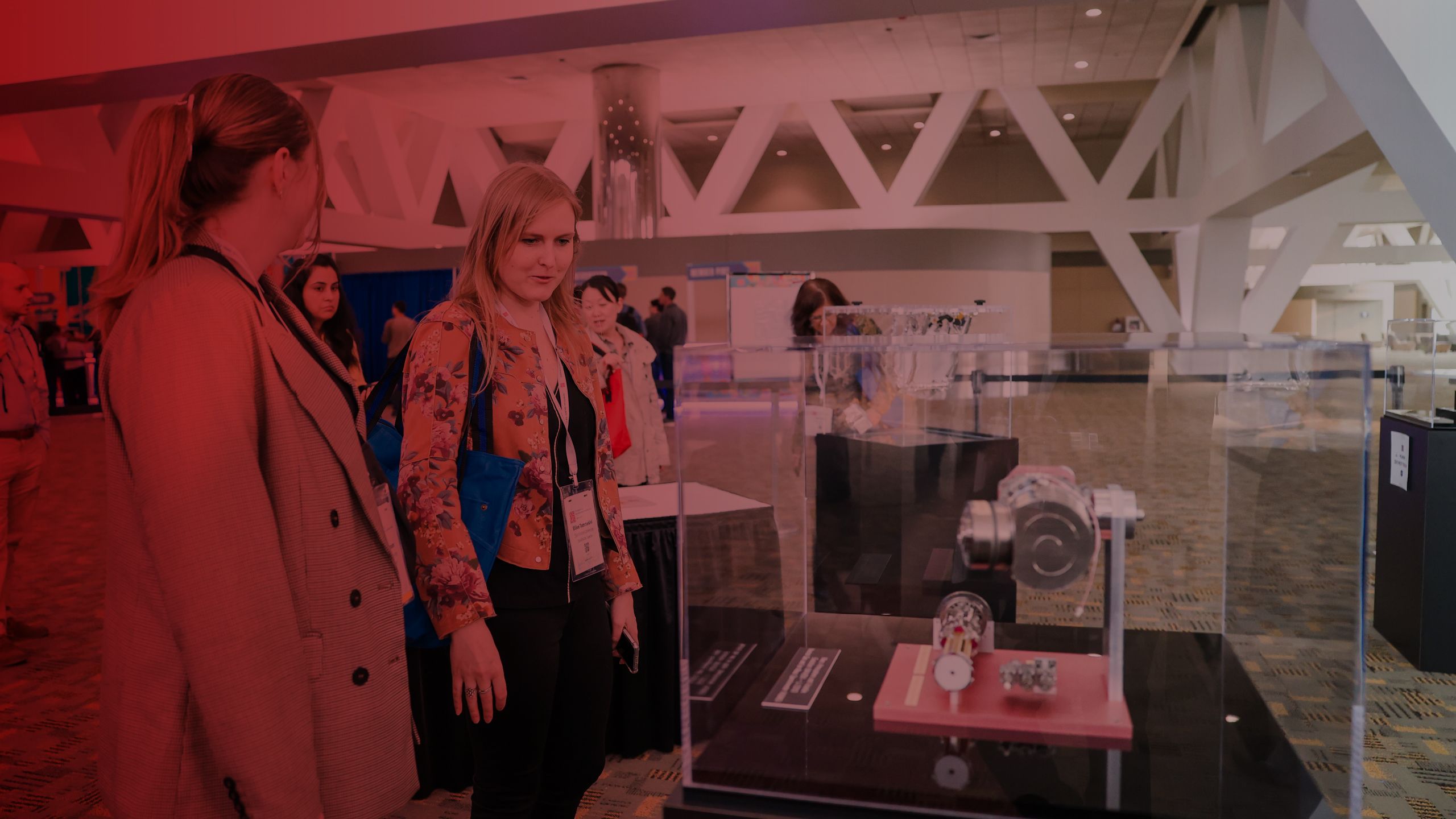
How would you describe the current landscape of mass spectrometry in 2025?
It's especially wide open – and has been for a number of years now. Each year, I believe I understand the scope of this type of measurement, yet the field never fails to surprise me.
Years ago, we saw the emergence of powerful computers that enabled molecular and macromolecular structural computations. Then electrospray ionization came along, suddenly allowing us to make new types of large biological ions. These advances were accompanied by a revolution in genomics technologies – sequencing the first human genome – which led into proteomics, and metabolomics, lipidomics, glycomics, and so on. All of this has pushed us, broadly, towards diagnostics and the identification of new, targetable molecules for treating disease, or simply gaining an understanding of what happens when the genome makes a mistake. Around the time all this happened – five years or so into my career – it was hard to fathom a brighter future for the field of mass spectrometry.
Nowadays, we have advanced ionization sources that enable us to generate ions in so many different ways. If you can imagine it, chances are there's a way to ionize it. There are still some molecular classes we’re stumbling around with, but we have so many more options – and so many gentler ones. This allows us to preserve structure and begin using mass spectrometry in different ways, including in structural biology.
It’s also worth mentioning all these new “sniffing devices,” similar to what you might have seen used in an episode of Star Trek. A recent example is Graham Cooks’ DESI source, which enables direct probing of an environment with atmospheric pressure ionization. There are some – my former postdoc Sarah Trimpin, for one – who don’t believe you even need voltage to make ions anymore. Steve Valentine (one of my first graduate students – has a droplet-generating vibrating tip that can create ions across a continuum of potentials used in positive and negative ion electrospay, taking advantage of differences in ionization that we never would have imagined would generate ions years ago.
It’s fair to say that the ion source revolution is here – that’s something we now have at our disposal.
Looking back at the past year – ASMS 2025 in particular – what stood out to you, thematically or technically?
The big theme this year, in my opinion, was the megadalton to gigadalton regime – and this has now been extended into the teradaltons as noted in the fascinating work shown from Evan Williams’ group. I have to stop and think about what this range truly means; a megadalton is a million (where large protein complexes and viruses reside), a gigadalton is a billion (where extracellular vesicles are found), and a teradalton must be somewhere beyond that. When you stop and really think about it, it’s almost inconceivable.
In the MDa to GDa range we learned about a new generation of mass spectrometers that will become available (from Waters based on Martin Jarrold’s work) and a compact prototype from a new venture started by John Hoyes. In full disclosure, I am involved in helping Martin commercialize his charge detection mass spectrometry (CD:MS) technology with Waters Corporation (the instrument launch is scheduled for October). With it, you’ll be able to measure the masses of complexes, nanoparticles, aggregates – even cellular components that you’d never imagined were measurable – all with high fidelity. At ASMS, Evan Williams’ group even presented a measurement in the teradalton regime.
Back in 2009, I was invited to give a special lecture exploring the mass scale of the universe. I looked all the way up, from the total mass of the universe – including dark energy – down to the lowest-energy mass imaginable. And in the middle, there was this region which John Fenn was revolutionizing with electrospray ionization, going from a thousand, to perhaps even a million molecular weight. At the time, there were claims you could achieve higher, but no one could imagine ten million to a hundred million, or ten million to a billion – or even a trillion. It just blows your mind. And we’re just at the beginning; we know nothing about what’s up there at the level of fidelity and limits of detection that mass spectrometry can bring. So the fact that there are peaks – that these peaks even exist – is rather amazing.
The instrumental advances enabling these high mass ranges have been building over the past decade; and really started accelerating maybe five years ago. Now, I think you’ve got a lot of people interested in seeing what’s out there, asking questions such as: What are the assemblies of complex protein structures that are responsible for a certain physiological state in a cell? For the first time, that’s going to be measurable.
“We’re just at the beginning; we know nothing about what’s up there at the level of fidelity and limits of detection that mass spectrometry can bring. The fact that there are peaks – that these peaks even exist – is rather amazing…”
What would you say are the most pressing challenges currently facing the field?
I think one of the big challenges will be stabilizing large molecules of interest, as well as destabilizing them in such a way that removes all of the solvent, while producing a single peak in your mass analyzer. If you have big, broad distributions of water surrounding your analyte – and your particle looks more like a water droplet than the molecule you're interested in – you’ll never resolve species with high resolution. This is one of the major challenges right now.
The techniques themselves are very capable of going to high resolution – into the hundreds of thousands, even. But seeing that resolution will be hard, as we learn how to desolvate and desalt molecules that we haven’t previously dealt with before. And the tremendous heterogeneity that exists with high mass will be challenging. So the source – and cleanup – still needs a lot of work; and, it is likely that new models will be needed to understand very complex systems.
The second stage will be to learn about the molecules through these powerful techniques of dissociation we have at our disposal. The first approaches that come to mind are laser-based – combining energy with light – or to have molecules hit a surface, such as Vicki Wysocki’s work with SID for smaller molecules. I expect that breaking these big molecules apart by MS/MS, MS/MS/MS and higher order strategies will be tremendously important . I think Vicki referred to it years ago as “complex down” rather than “top down:” where you start with a large protein complex and then break it apart into its individual proteins, before breaking those into peptide ions to learn the sequences. There is then, of course, the challenge of building databases, models, and fragmentation rules for all of this.
We’re looking at molecules now that have post-translational modifications, and we don’t yet fully know how to deal with that. Often, these are stabilized by other parts of the cell – lipids may stabilize some regions and hold things together. Due to our limited understanding of this area, breaking each class of new complexes apart in an information rich way will be a milestone when it happens – key benchmarks for the field to build upon.
My group, in collaboration with Martin’s, submitted a paper recently using an ion mobility instrument on the front of a CD:MS system. That gives you a powerful new dimension of separation at the millisecond scale. Furthermore, Martin and his student Laura Young recently published an LC instrument on the front of one of their analyzers. Moving forward, we’ll see more multiple-dimensional setups emerging with CD:MS, and implementing all of this will be challenging.
Everything requires signals that are just barely in the regime of measurable right now. To give you some perspective: 30 years ago when we were starting, we literally had one ion every few seconds; it would take hours to get enough signal to see a peak. Mobility instruments now can measure analytes we couldn’t even dream of back then, but the sensitivity has had to come up many orders of magnitude to make that possible.
This will also be an area of importance for CD:MS. There will need to be new ways to make those measurements, just as there were for mobility cells. Nowadays, there are many ways to perform ion mobility, and I predict you’ll see many ways to do charge detection in the future as well.
We’re just at the beginning, and these are just the challenges I see. More interesting will be the ones we don’t see – rather, those we stumble into.
What sort of external influences – economic, regulatory, or otherwise – do you think are having the biggest impact on the field right now?
This field was a small one for at least 60 or 70 years, and one of the big drivers of its growth wasn’t proteomics or genomics – rather economics. Having industries interested in building and selling instruments really supported the field, providing another source of funding beyond solely federal grants. This has enabled the field’s migration away from physics-based problems and toward more applied problems – in other words, toward the more affluent area of medicine and drugs.
It took antibodies around 25 years to hit the market from when they were first proposed, and I feel we’re at a similar stage now with gene therapies. There are now more than 2,000 gene therapies at some stage of clinical development across various companies around the world. COVID therapeutics were a form of this and in some ways, the mRNA-based approaches worked, which is very exciting. But overall, we’re still at a very early stage. So having medicine as a driver – the potential to influence people’s wellness and cure rare diseases – is really powerful. You have these horrible one-off diseases in children, for example, that you can now imagine having a cure for.
All of these things are major drivers that help fund the development of mass spectrometry.
With this in mind, having economics in our favor is a big advantage.
"So having medicine as a driver – the potential to influence people’s wellness and cure rare diseases – is really powerful. You have these horrible one-off diseases in children, for example, that you can now imagine having a cure for. "
Looking towards the future, what do you think needs to happen (or change) to enable more meaningful progress in mass spectrometry?
I believe that one of our limitations is going to be in training the next generation of scientists. It’s a feeling I think many of us share.
Analytical chemistry is one of the smaller disciplines, though it is growing – in large part due to mass spectrometry. Having students is key, and a concern is that it's recently become difficult, primarily due to politics. We cannot overstate the impact of our foreign students on our success – the role they’ve played after coming to the United States; founding companies, working in industry, becoming professors. How are we possibly going to replace that impact?
The current political environment is such that, if I were a student studying abroad who dreamed of becoming a scientist in a country where I otherwise couldn’t be, I’d be hesitant. I still hope young graduates are looking at the U.S. as an option, because I think – without dismissing other countries – the U.S. PhD process is one of our great exports. We've imported and exported talent around the world in ways that have been profoundly impactful for science. Therefore, my concern is that we might enter a world where we lack the intellectual contributions and diversity of thought that we’ve benefited from.
Science is a meritocracy; we don’t put boundaries on ideas. Ideas don’t have political boundaries, and the notion that we would limit who can participate is upsetting. Of course, if you impact the overhead rate of universities, you damage the whole scientific endeavor. It costs a lot of money to run a university, but that really is more of a political problem too.
I think the biggest obstacle is remembering that we should be training more people around the world to understand the planet – we are a part of it, after all. Our removal of ourselves as human beings from the natural world is obviously a crazy idea. We have to participate in the world like all other organisms. But if I step back and ask what might set us back? Wars, political issues, these sorts of things come to mind.
What’s your overall outlook on the future of the field right now?
I think the field is moving in the right direction. I’m so bullish about the future – there’s rarely a day that I don’t see something that I find fascinating. The world has realized that, as an analytical technique, what could be more powerful than making a measurement of mass? It's incredibly sensitive and flexible.
These are amazing capabilities. There are still some things we can’t do yet, but if you really want to understand things at the molecular level – that’s only going to get better and better.
David E. Clemmer is the Robert & Marjorie Mann Chair of Chemistry at Indiana University Bloomington and a Distinguished Professor in the Department of Chemistry
